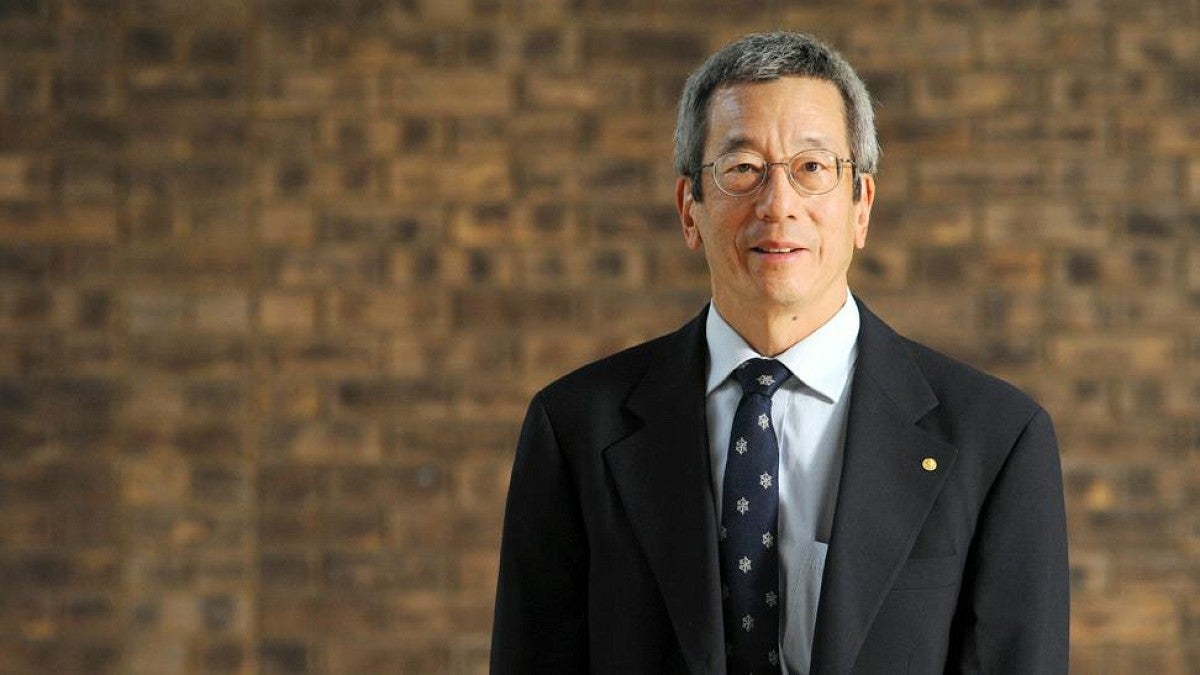Nobel Prize-winning chemist Roger Tsien, who collaborated with UO researchers to explore and develop a rainbow of fluorescent proteins, died Aug. 24 in Eugene. He was 64.
Tsien worked for much of his career at the University of California, San Diego, but spent some 20 years working with faculty at the UO on research involving the genes responsible for creating proteins that produce luminescence in jellyfish and other organisms. He received the Nobel Prize in chemistry for his work in 2008.
RELATED LINKS
While he wasn’t the original discoverer of the fluorescent proteins, Tsien developed ways to produce them in many colors and then use them in research. By illuminating specific proteins, fluorescence lets scientists follow cellular processes and better understand how living organisms, including humans, function.
Tsien’s connection to the UO began in 1995, when he collaborated with physics professor Jim Remington in the Institute of Molecular Biology to study a green fluorescent protein in jellyfish. Further work resulted in a mutation that produced yellow fluorescence, and the two proteins are still in wide use to mark cells and help track and study biological processes.
Tsien moved to Eugene in 2015 and joined the UO’s Institute of Neuroscience.
“The institute thus provided professor Tsien an academic home and a chance for our students, research fellows and faculty to learn from this most creative of scientists,” said UO biology professor Terry Takahashi, co-director of the neuroscience institute. “We miss him.”
Takahashi said the fluorescent proteins developed by Tsien have allowed UO researchers to show when genes important to neural functions are active and to aid research into the development and function of the nervous system.
Before he left San Diego for Eugene, Tsien developed other fluorescent proteins that could be turned on and off at higher speeds. Most recently, at a 2016 fall retreat for the Institute of Neuroscience, he described his lab’s efforts to show that a sheath that surrounds nerve cells may be the basis of learning and memory.
“He had embarked on a new avenue of investigation,” Takahashi said.
According to a UCSD obituary, Tsien was born Feb. 1, 1952 in New York City, the third son of immigrant parents. He was a scientist from early childhood, sketching out chemistry experiments as an 8-year-old in a notebook now kept in the Nobel Museum in Stockholm, Sweden. His first Boy Scout merit badge was in chemistry.
In 1968 at the age of 16, he took first prize in the prestigious Westinghouse Science Talent Search for high school seniors. He attended Harvard College, graduating summa cum laude in chemistry and physics in 1972, then earned his doctorate in physiology in 1977 at the University of Cambridge in England.
Before coming to UCSD in 1989, he worked as a research assistant in Cambridge and then as a junior professor at the University of California, Berkeley.
Tsien was a member of the Institute of Medicine, the American Academy of Arts and Sciences, the U.S. National Academy of Sciences and the Royal Society of London. Among his awards: the Gairdner Foundation International Award, the American Chemical Society Award for Creative Invention, the Heineken Prize for Biochemistry and Biophysics, the Max Delbruck Medal in Molecular Medicine, the Wolf Prize and the Keio Medical Science Prize.


